Affiliate links on Android Authority may earn us a commission. Learn more.
Apple AirPods Pro vs Google Pixel Buds (2020): Seeking greatness
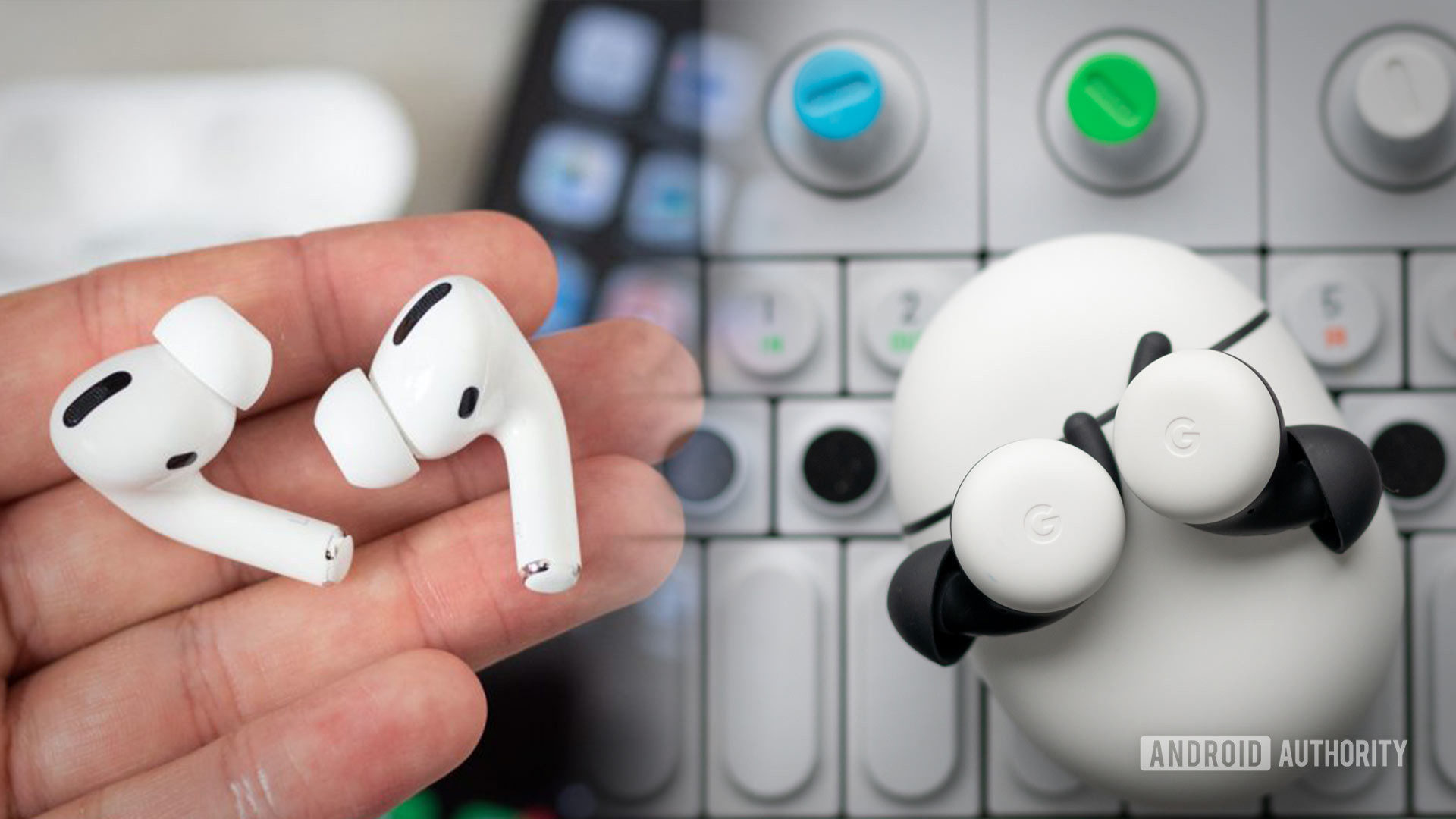
While they look like polar opposites, the AirPods Pro and Pixel Buds are more alike than people realize. From high-end hardware to a luxuriously smooth user experience, Apple and Google are both inching toward perfection. However, there can be only one winner. Who comes out on top in the battle of the Apple AirPods Pro vs the Google Pixel Buds? Let’s find out.
Update, February 11, 2021: This versus was updated to address the Samsung Galaxy Buds Pro as an alternative.
Simple shapes, signature designs
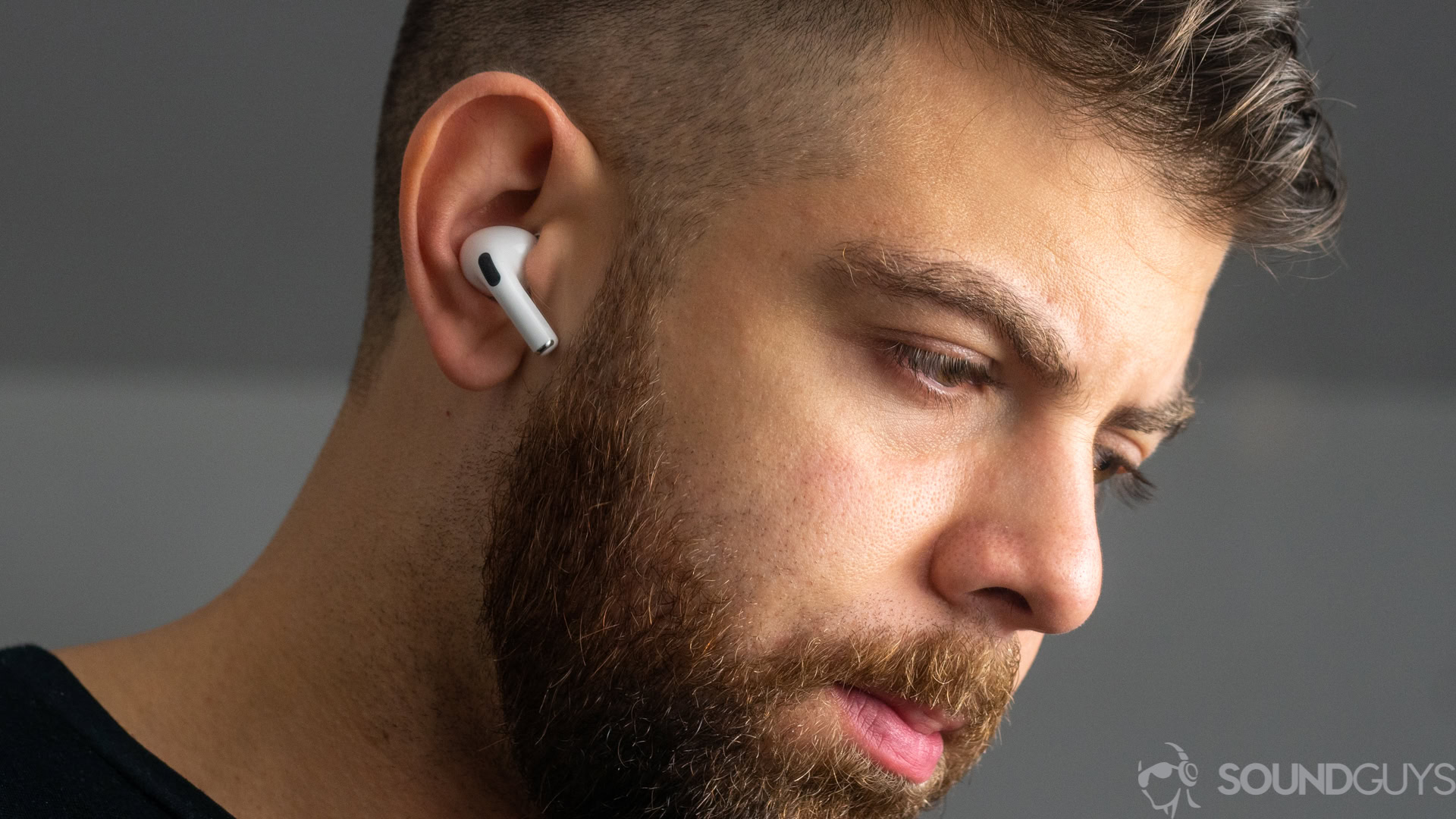
Both the AirPods Pro and Pixel Buds were designed with simplicity and the user in mind, though each takes a unique approach. On one hand, Apple’s buds match the same minimalistic style that’s been coming out of Cupertino for years. The angled stems are easy to insert and remove, and they serve as pressure-sensitive touch controls to boot. Apple didn’t miss a single detail — even the silicone ear tips offer a more secure fit thanks to their unique design.
See also: Google Pixel buds review | Apple AirPods Pro review
The design is classically Apple, though it’s been refined from that of the original AirPods, starting with a better fit and isolation. Of course, the hardware is only half of the noise-canceling battle, so we’ll have more to say on that later. Apple also includes three different pairs of ear tips so you can find your perfect fit.
On the other hand, Google’s Pixel Buds adopt a wider, flatter disc design. They’re thinner than Apple’s buds and therefore lie more flush with the outer ear. This is probably better if you wear low hats or you just don’t want to look like you have Q-tips in your ears. The Pixel Buds offer a solid seal with their silicone ear tips, though it’s not perfect, and there’s no software-based noise-canceling to speak of.
Both pairs are jam-packed with sensors to detect when you remove or insert each earbud. When you remove either pair, playback pauses automatically and it resumes once you pop the earbuds back in. Unfortunately, the Apple AirPods Pro only resumes playback when connected to an iOS device, otherwise, you’ll have to press play again.
Stylish and unique charging cases
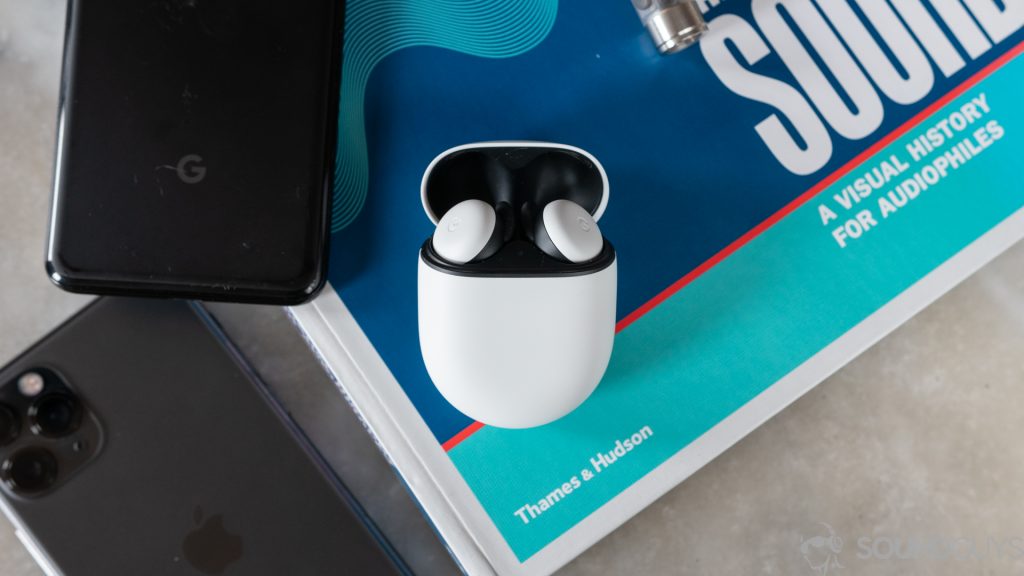
Apple modified its original AirPods charging case, opting for a wider, shorter rectangle highlighted by a singular LED. The squat case is as easy to use as they come. It automatically begins pairing when you open the lid for the first time. It pairs with iOS users in mind too: a notification card appears on nearby devices to complete the setup in a hurry. After that, you just have to accept the pairing and you’ll be off and running. Even better, the AirPods Pro case comes ready for Qi wireless charging.
Google’s case may be more egg-shaped, but it’s no less simple to use. You’ll hear a click when opening or closing it, and internal and external LEDs notify you of the battery life for your buds and the charging case respectively. The extra LED is handy, but the cases generally offer the same experience.
The Pixel Buds’ pairing process mirrors that of the Apple AirPods Pro, though it’s automatic for Android devices rather than iOS. Simply accept the pairing once you open the lid and you’re in business.
We can’t really give either case an edge because the biggest difference is the shape.
Controls and software
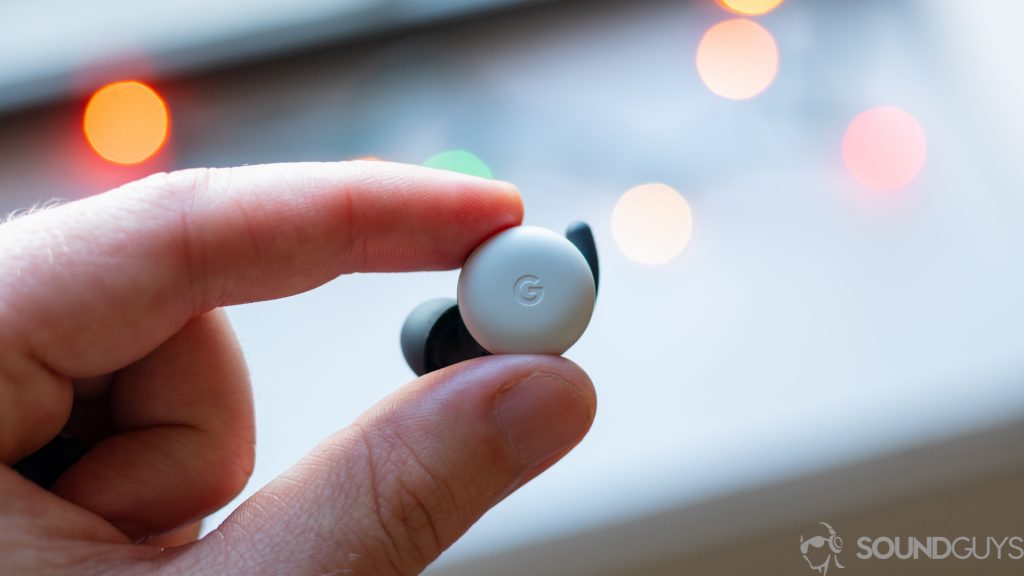
Like we mentioned before, the ear stems on the AirPods Pro are touch and pressure-sensitive. You can control most features, including playback, volume, with a series of taps or presses on either earbud. It’s easy enough to remap your controls from any iOS device if you’re not happy with the default setup. Google’s Pixel Buds are touch-sensitive as well, and you can control the same features as with the Apple AirPods Pro. Both pairs of headphones also offer hands-free support for their respective voice assistants.
Apple AirPods Pro
The launch of iOS 14 brings a new suite of features to the Apple AirPods Pro, most notably Spatial Audio support. It’s Apple’s take on three-dimensional sound. It will support Dolby Atmos, as well as videos encoded for 5.1 and 7.1 surround sound. The updates include an automatic switching feature too, so if you’re rocking out on your phone but you start a YouTube video, your AirPods will jump right to YouTube for playback.
Apple’s H1 chip is its secret weapon when it comes to playback. It makes it easy to alternate between iOS devices, and you can share playback between multiple pairs of compatible headphones. Whether you’re jogging with a friend or watching an in-flight movie, you can seamlessly share your audio with a second user.
Google Pixel Buds
Unfortunately, Google doesn’t support a similar list of features on the Pixel Buds, but the live Google Translate feature is a nice addition. It’s a cool idea, and it seems like it should be great, but during his full review, Adam Molina found it imperfect. It was often no easier than simply using his phone. Google has since promised a series of “feature drops” for its Pixel Buds, each aimed to add functionality and fix bugs as they arise.
Learn more: Headphone buying guide: Everything you need to know
Apple and Google may be as unlike as oil and water, but they seem to agree on the importance of simplicity. Both pairs of headphones are easily accessible for all age groups thanks to simple controls and flexible designs. However, the Apple AirPods Pro still take the win in this category for their impressive features.
Can you hear me now?
The AirPods Pro have been the class-leader in microphone quality since they launched, and Google’s new Pixel Buds don’t challenge the status quo. Both use similar accelerometers and noise reduction, but the AirPods Pro simply does the job a bit better. Give both pairs a listen below:
Apple AirPods Pro microphone demo:
Google Pixel Buds (2020) microphone demo:
While Apple is the early winner, software updates always have a chance to improve things, so this category may change hands down the road.
Reliable connection quality
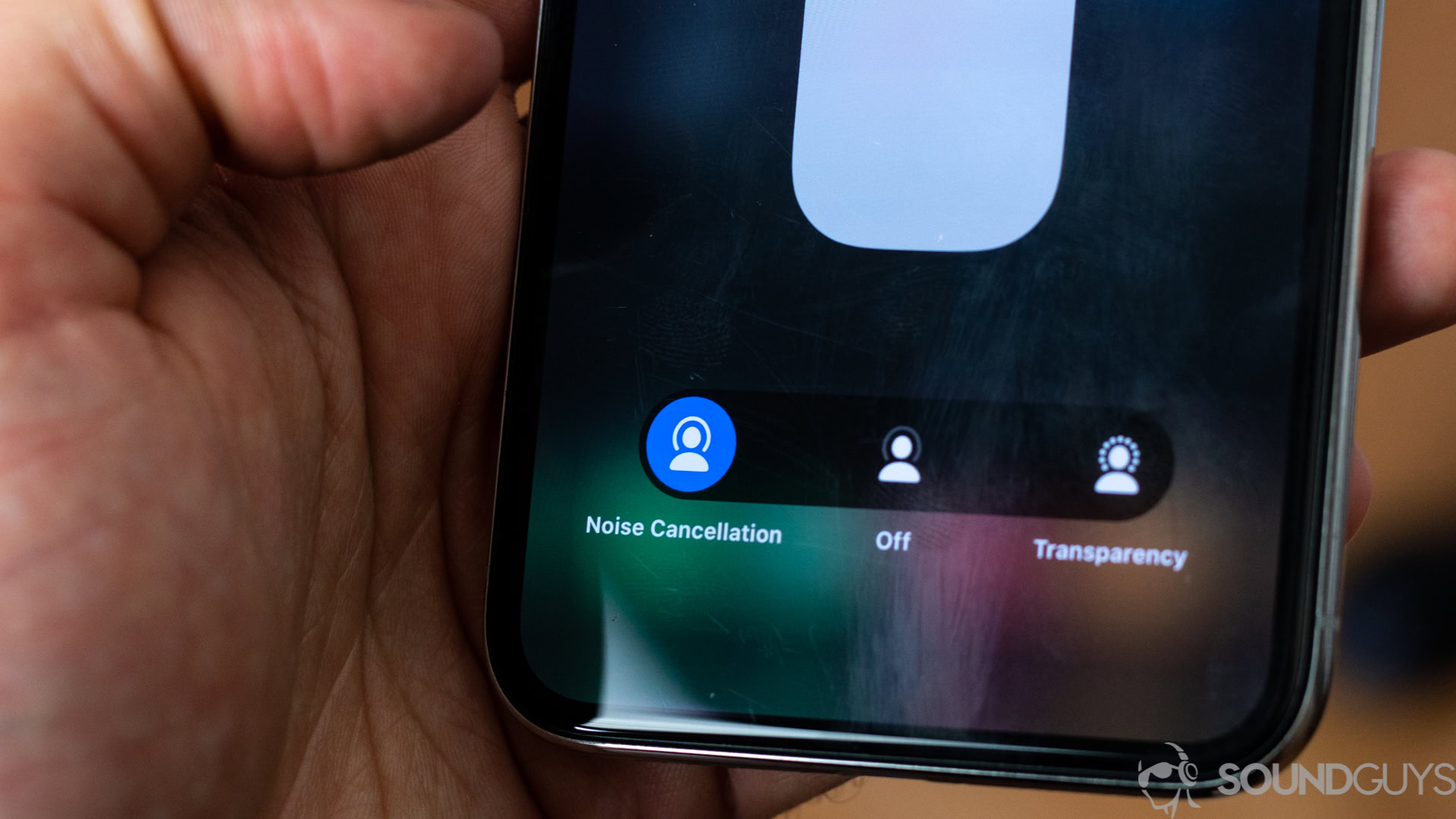
You can boast a great pair of earbuds, but without a reliable connection, they may as well be a fancy paperweight. Luckily, that’s not the case with either the Google Pixel Buds or Apple AirPods Pro. Both pairs stand out in a crowded field.
Once again, Apple’s H1 chip is its best weapon — it’s brilliant with iOS and macOS devices, but it works well with Android phones too. The secret is the Bluetooth 5.0 firmware, which the Pixel Buds also match. Neither pair is set to work with Bluetooth multipoint, so you’re stuck with one device at a time.
However, both support the same AAC and SBC codecs so iPhone users will get the best audio quality with either pair. The AAC codec doesn’t always play nicely with Android devices, which makes the lack of aptX support curious, though SBC connectivity has come a long way in the past few years. It probably won’t matter too much unless you’re a true audiophile listening for the most minute differences in your music.
If you want to talk about the connection range, the Pixel Buds aren’t messing around. Google’s buds can hold a connection for the length of a flat American football field, which is handy for a select few reasons. If you’re a runner and you find yourself doing laps around the track, just drop your phone in the middle of the field and you’ll stay connected all the way around. Although the Pixel Buds seem great on paper, the fact remains that connection issues continue to plague the headset even after feature drops to fix them.
The battery-life battle
No matter what device you give us, we’re probably going to test its battery life right off the bat. Our standardized battery test yielded 6 hours, 8 minutes on the Pixel Buds, while the AirPods Pro lagged behind at just 5 hours, 6 minutes. We already know that active noise-canceling is power-hungry, so that helps to explain away a bit of the difference. Even still, the AirPods Pro battery life is impressive considering how hard the AirPods Pro are working at any given time.
As for charging, the two pairs are fairly even with the Pixel Buds gaining two hours of playback after 10 minutes and the AirPods Pro grabbing an hour of power after just five minutes in the case. Google’s buds benefit from an additional 3.8 charging cycles in the case, while the AirPods Pro manage 4.3 cycles. Apple offers slightly more overall battery life, but the standalone playback is the most important, giving Google its first win.
The AirPods Pro boast noise-canceling
Our final category covers both noise-canceling and overall sound quality, though the AirPods Pro and Pixel Buds are beasts of different stripes. For starters, Apple’s setup relies on a mix of hardware and software for genuine noise-canceling power.
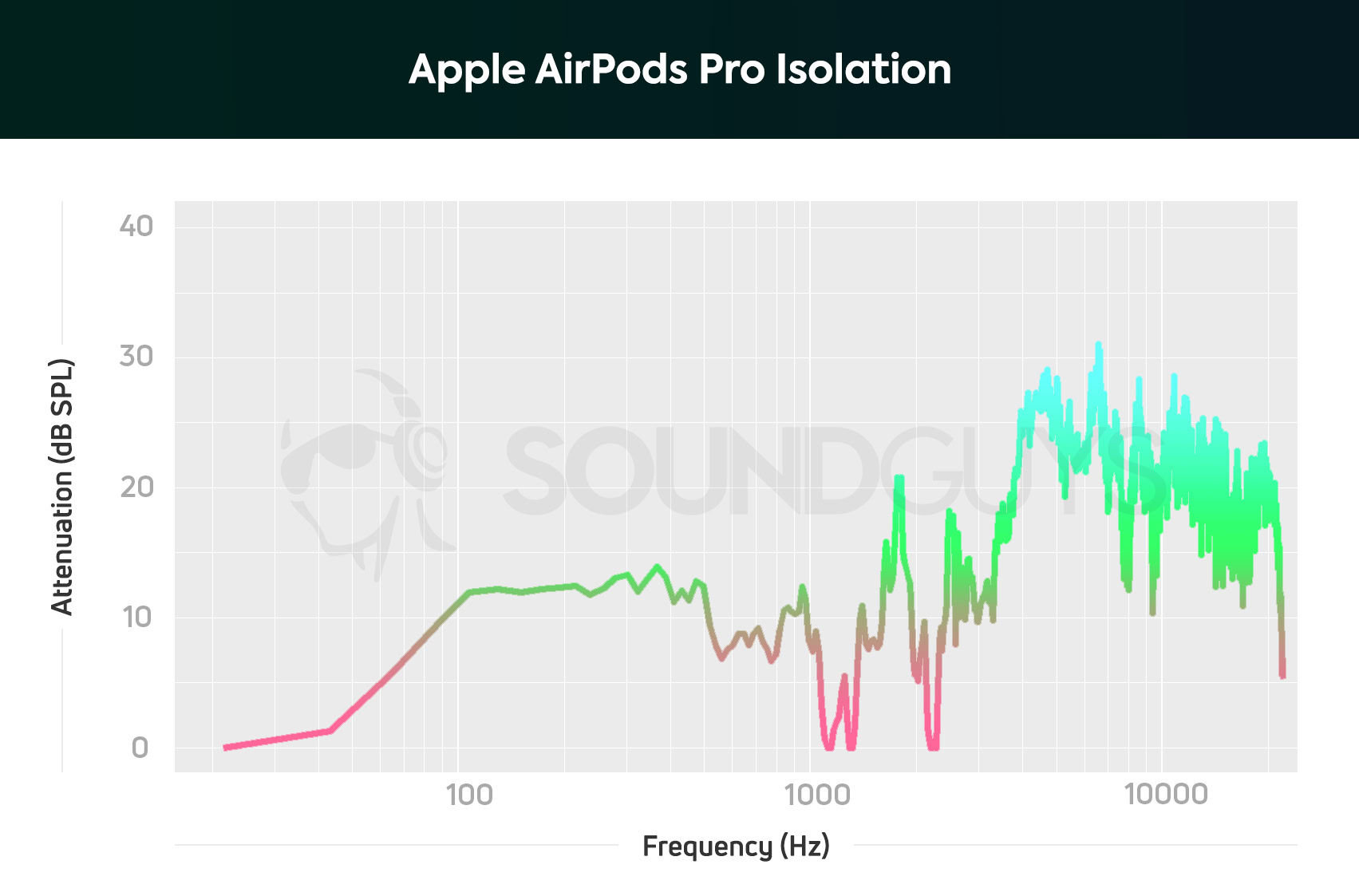
The AirPods Pro actively adapt to your surroundings, working harder in a crowded — but socially distanced — coffee shop, and taking it easier in a quiet apartment. Its H1 chip is dedicated to live noise-canceling adjustments, so you’re left with optimal background noise reduction. It’s among the best portable ANC solutions we’ve tested.
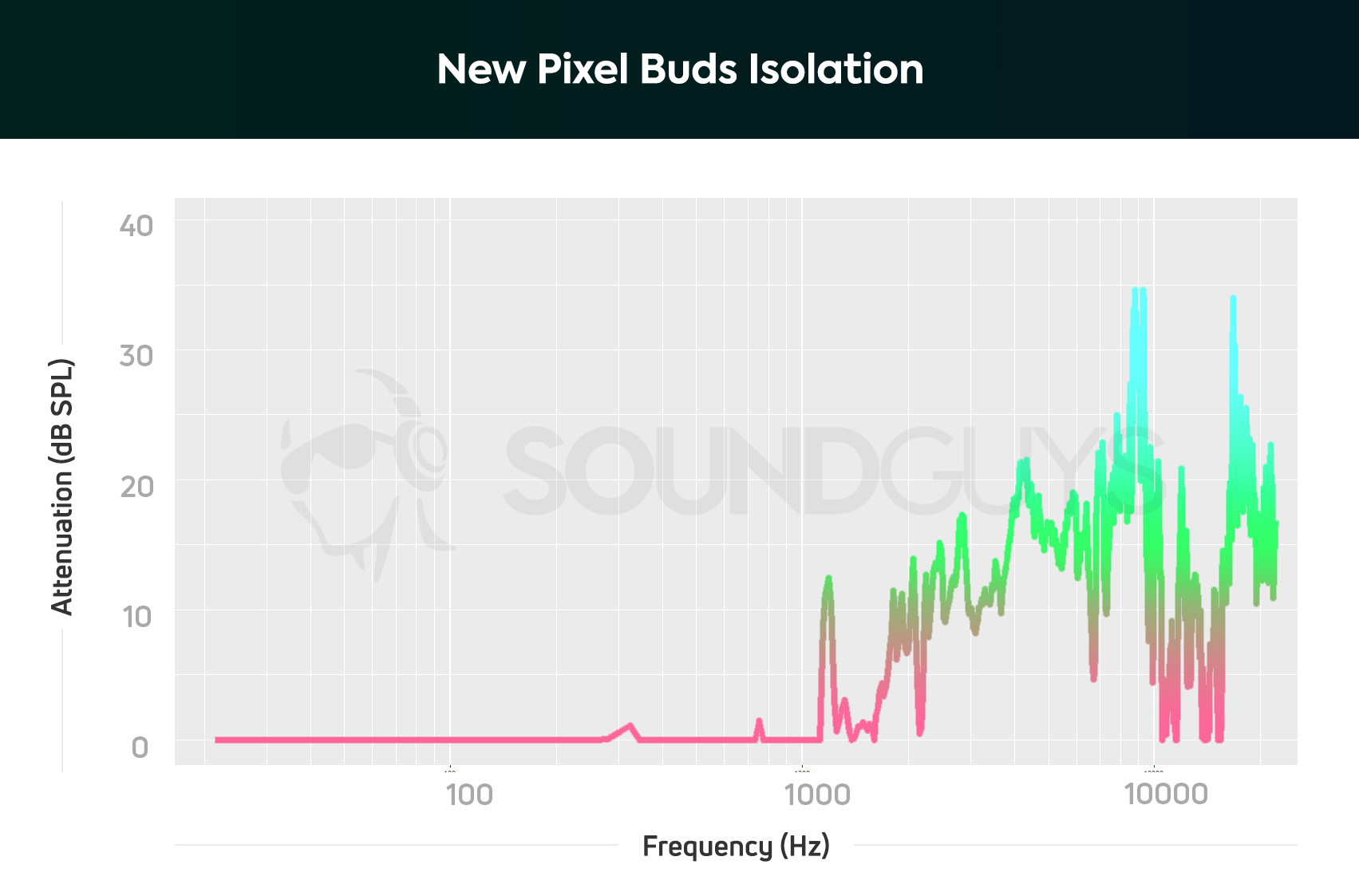
Google’s buds use hardware and software for adjustments as well, though it’s mainly for volume-based changes rather than any kind of active noise-canceling (the Pixel Buds don’t have ANC). You’ll save $50 with the Pixel Buds though, so some sacrifices had to be made. Just like the AirPods Pro, the Pixel Buds use a vent system that relieves the suction feeling from your ears.
Anyone with a loud commute on an airplane or a train should look to the AirPods Pro for their hearing protection. Active noise-canceling helps to keep ambient sound at safe levels, prolonging the health of your ears. The Pixel Buds make sense too, if you’re still working from home or you need to hear your surroundings.
Apple AirPods Pro vs Google Pixel Buds — Sound quality
It’s easy to get lost in the high-tech sauce, but both the AirPods Pro and Pixel Buds are earbuds at the heart of it all. We’ve looked at the fancy features and the costly specifics, but it’s finally time to see which pair truly offers better sound for your money.
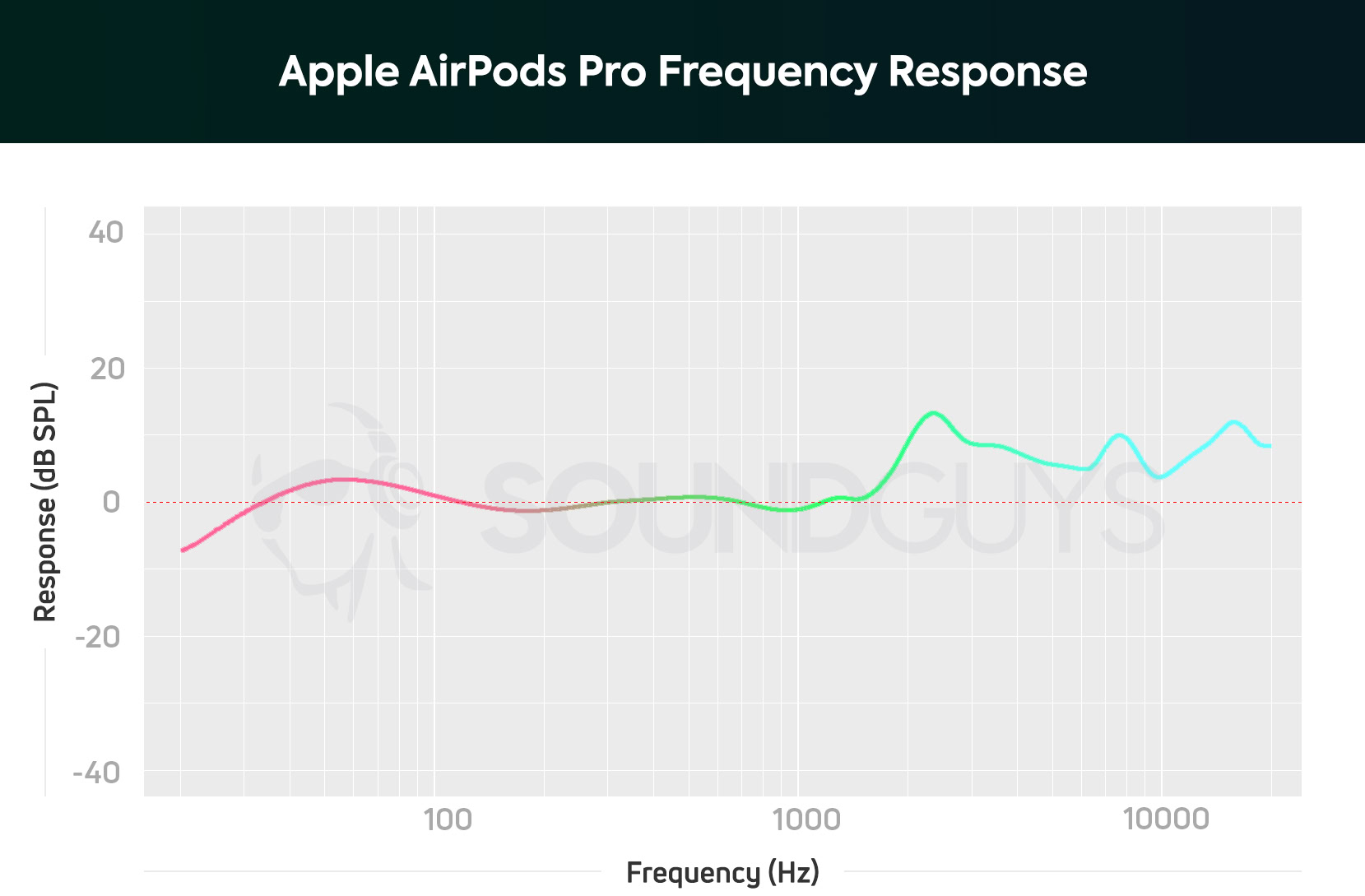
Objectively, the AirPods Pro take the edge with a 9.2-rating in our frequency response test, compared to a 9.1 for Google’s Pixel Buds. Principally, both headsets follow a similar sound signature: boosted bass and treble notes. However, where these amplifications occur is the cause of the difference between how both headsets sound.
Listeners may find it easier to hear more harmonic resonances and perceive greater detail with the AirPods Pro compared to the Pixel buds. This is a consequence of the emphasis from 1.5kHz and up. However, you’re more likely to hear a sub-bass derived “oomph” from the Pixel Buds because of the emphasis below 100Hz.
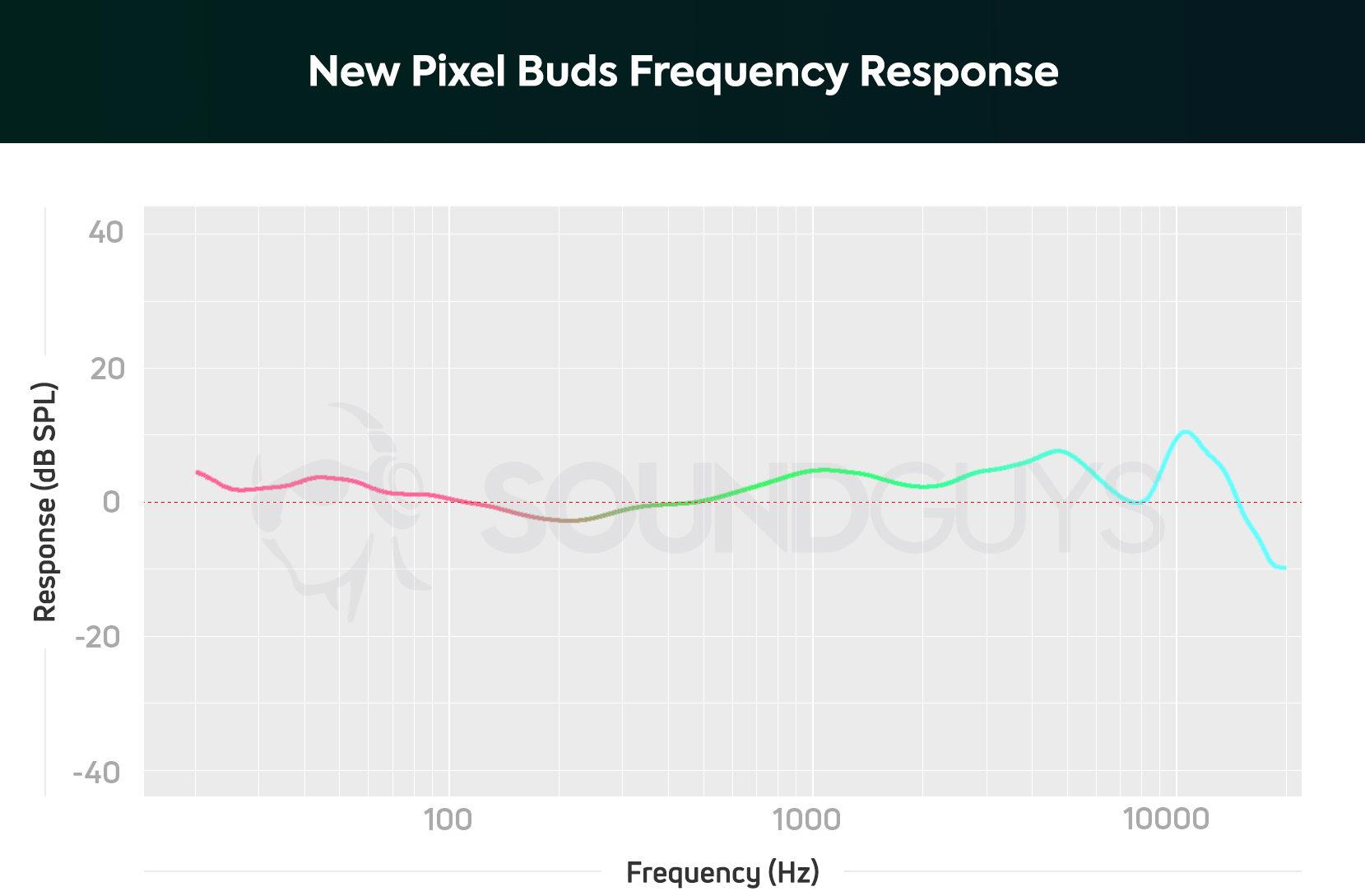
The AirPods Pro are more versatile, and you’re less likely to notice any auditory masking, especially in a loud situation. The active noise-canceling is a contributing factor of course, but everything is on the table when it comes to overall quality. Neither headset allows listeners to create a custom EQ, but with iOS 14, users can set certain audio preferences through the accessibility settings. Although it’s extremely close, the AirPods Pro edge out the Google Pixel Buds, barely.
Apple AirPods Pro vs Google Pixel Buds: Which pair should you buy?
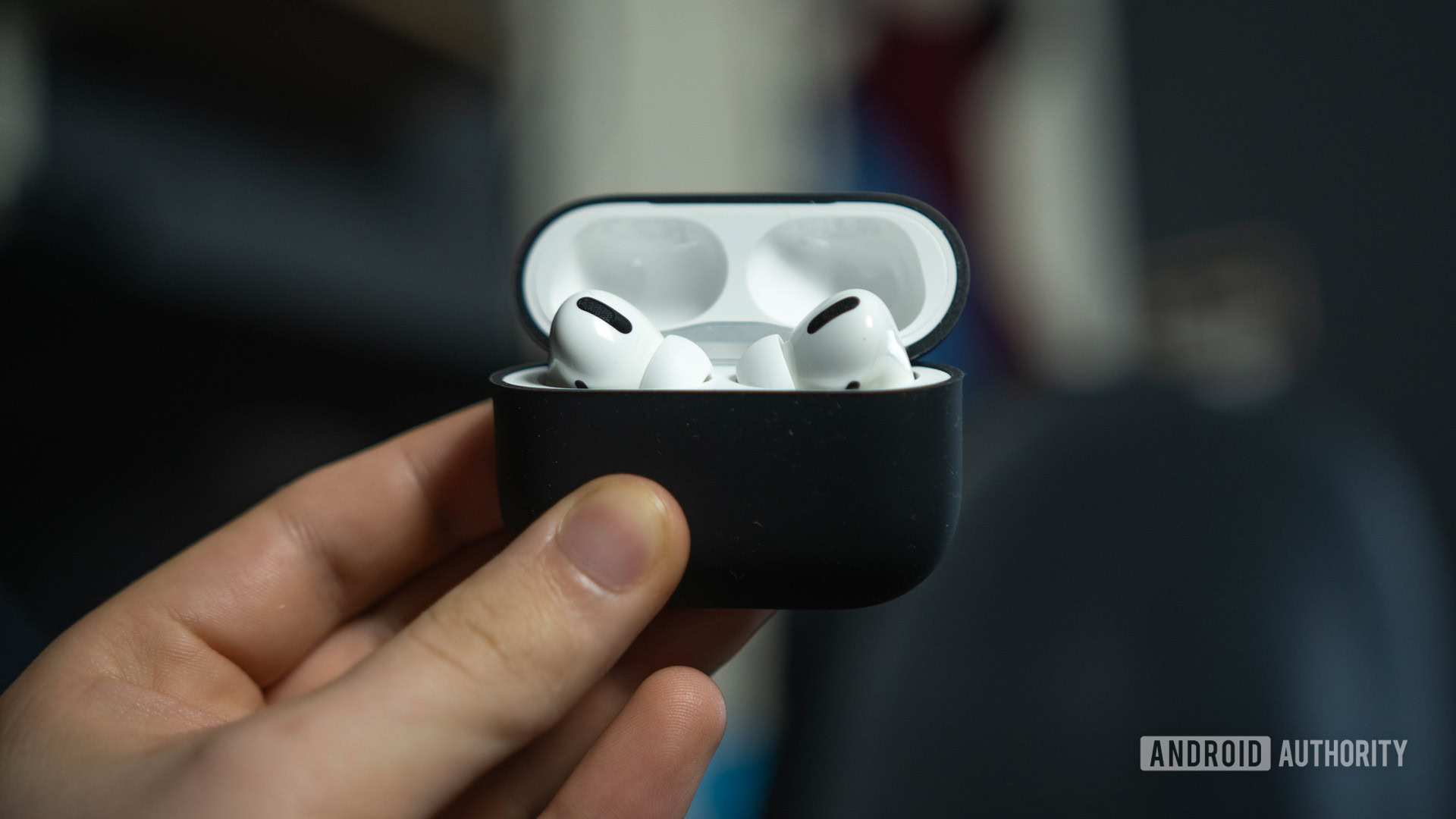
You can probably see the writing on the wall, but the Apple AirPods Pro outperform Google’s Pixel Buds. It’s not an unexpected result though — the AirPods Pro are significantly more expensive. Even still, the Pixel Buds are a solid option, especially for Android users. Updates continue to make the battle closer, and the battery life is a huge plus. Either way, you’ll wind up with a high-quality pair of true wireless earbuds that are packed with new tech.
If you’re an Android user and you can’t get over the shortcomings, you may want to turn your attention to the Sony WF-1000XM3 with their noise-canceling, sound quality, touch controls, and much more.
Ready to make your choice? Learn more at the buttons below.
Consider the Samsung Galaxy Buds Pro instead
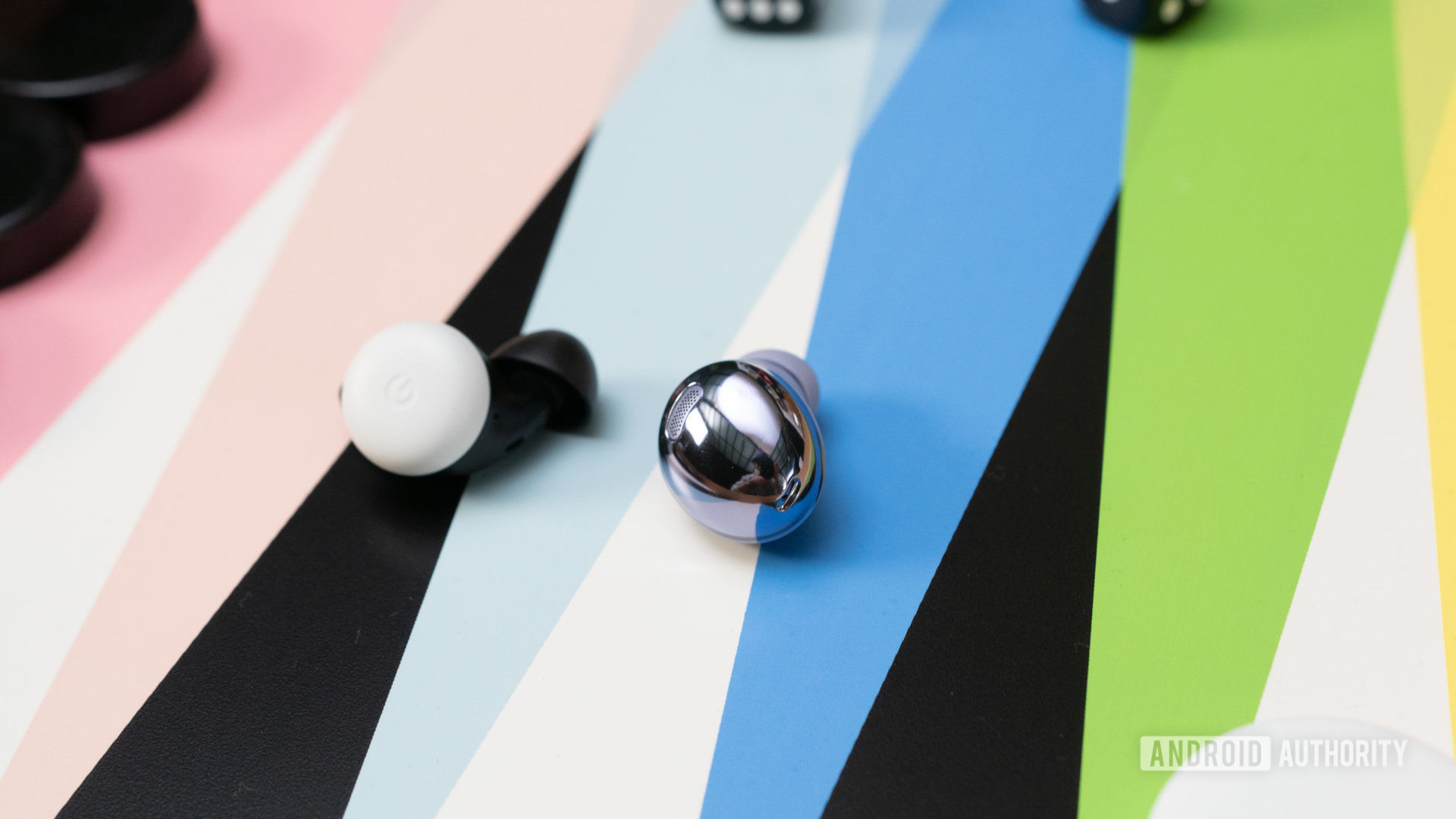
The Samsung Galaxy Buds Pro are more affordable than the Apple AirPods Pro and offer very good noise-cancelling for the price. Sound quality is consumer-friendly, translating to amplified bass and treble notes, and you can choose from a selection of EQ presets if you want something more specialized. The Galaxy Buds Pro earphones are more durable than Google or Apple’s true wireless earbuds, and have an IPX7 rating to prove it. The Samsung Galaxy Buds Pro are uniquely comfortable, and a great pair of daily earphones particularly for Samsung Galaxy smartphones.